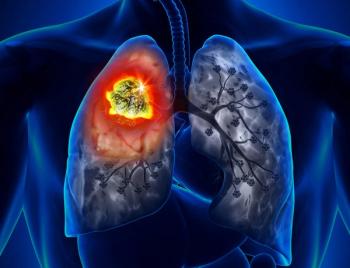
Oncology NEWS International
- Oncology NEWS International Vol 18 No 12
- Volume 18
- Issue 12
PET timing guides radiation RX in lung ca
CHICAGO-FDG-PET imaging of non-small-cell lung cancer patients prior to receiving radiation therapy should not be the basis for determining areas that may benefit from higher doses of radiation, according to research out of Philadelphia’s Thomas Jefferson University Hospital.
CHICAGO-FDG-PET imaging of non-small-cell lung cancer patients prior to receiving radiation therapy should not be the basis for determining areas that may benefit from higher doses of radiation, according to research out of Philadelphia’s Thomas Jefferson University Hospital.
Some studies suggest that areas of avid FDG uptake on PET images before treatment are also the regions most likely to have intense metabolic activity after treatment, according to Nitin Ohri, MD, a radiation oncology resident at the hospital. “Investigators are looking to PET imaging to find ways to predict if any part of the tumor would benefit from a higher radiation dose,” Dr. Ohri said. “I wanted to see if residual activity on a scan after treatment correlates with the activity pattern on a scan done before treatment.”
For this study, PET scans of 43 patients, 15 of which showed significant activity both before and after treatment, were examined. Dr. Ohri set up a coordinate system that divided tumors into nine regions, or 17 regions for larger tumors. Metabolic FDG activity in the regions both before and after treatment was then compared (ASTRO 2009 abstract 2583).
Dr. Ohri found the regions of intense FDG uptake for some patients didn’t change after treatment.
However, some patients showed activity in completely different regions before and after treatment, he explained.
“It’s not sufficient to increase the dose to areas that are especially active on PET imaging before treatment and expect that to improve the control rate,” Dr. Ohri said in a written statement. “It may be more appropriate to do a scan halfway through treatment and plan additional radiation doses around that.”
Articles in this issue
almost 16 years ago
Cetuximab plus chemo boosts surgery in advanced colon caalmost 16 years ago
OB/GYN revises suggested age for cervical ca screeningalmost 16 years ago
Brain tumor gene mapping project launches in Seattlealmost 16 years ago
Experts take umbrage with federal panel change to age for mammo screeningalmost 16 years ago
Radiosurgery gains role for noncancer applicationsalmost 16 years ago
New radiotracer shows early treatment response for patients with lung canceralmost 16 years ago
Addition of rituximab improves OS in chronic lymphocytic leukemiaalmost 16 years ago
Micromet scores multiple development dealsalmost 16 years ago
New agents for lymphoma take center stagealmost 16 years ago
Vaccines plus screening could end cervical caNewsletter
Stay up to date on recent advances in the multidisciplinary approach to cancer.


















































































